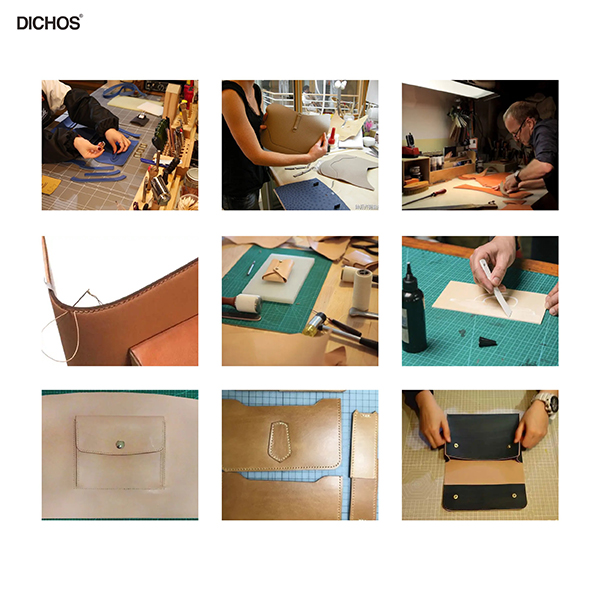The Detailed Handmade Leather Bag Steps
Today we will briefly understand the production process of our bags
1. Cut the skin – first cut the paper pattern, use cardboard for proofing, and it will not be out of shape after drawing.
2. Use the leather special pen to draw on the leather. If vegetable tanned leather is not recommended to use a leather pen, use an awl or a non-writing ballpoint pen to draw marks on the leather.
3 Use a professional leather knife or utility knife, scalpel, or scissors to cut the leather. The key is to cut it neatly.
4. Treatment of leather surface and leather back
The leather surface is coated with maintenance oil, vegetable tanned leather has ox foot oil, and ordinary leather only needs to be cleaned. The back of the leather is coated with thinned CMC and smoothed. I usually scrape it with a plastic triangle. After the maintenance oil and CMC are dry, the initial bonding begins.
5. Bonding
There are some leathers that need to be double-layered, such as the cover, many all-purpose glues can be glued, and white glue can also be used instead. Temporary bonding, using double-sided tape to bond, only plays a role in positioning, when the two layers of skin are punched together, it is easy to slide, and tear off after punching.
6. Punch holes
Make a stitch where you want to sew so that the punched holes are not skewed. (Use a ballpoint pen that cannot be written on vegetable tanned leather, and use a special pen for leather to draw on the leather for ordinary leather. After punching the hole, remember to wipe off the silver handwriting with a cleaning pen)
7. Stitching
You can use hemp thread for leather. It is not recommended to use hemp thread for ordinary leather. If it is too hard, you can use acrylic thread. Measure the thread to the appropriate length (about 3 times the length to be sewn in the thread hanging part). Thread the needle through both ends of the thread and sew back and forth.
8. Dressing
After sewing, check the edges again and make corrections to ensure that the edges are exactly the same.
9. Edge Sealing Apply CMC or edge oil on the trimmed edge. (CMC is a little thicker, which covers the adhesive seam and facilitates sanding) Be careful not to let these things overflow everywhere. After drying, use 350-grit sandpaper to smooth it out and then apply the previous procedure. After drying, use 800-grit sandpaper (2000-grit is also acceptable) to smoothen it. If it is not flat, continue until it is flat. After completion , Use wax or smear the edge, use the flannel or crushed leather to polish the leather surface until glossy to make a beautiful and perfect edge.

Post time: Sep-24-2022

